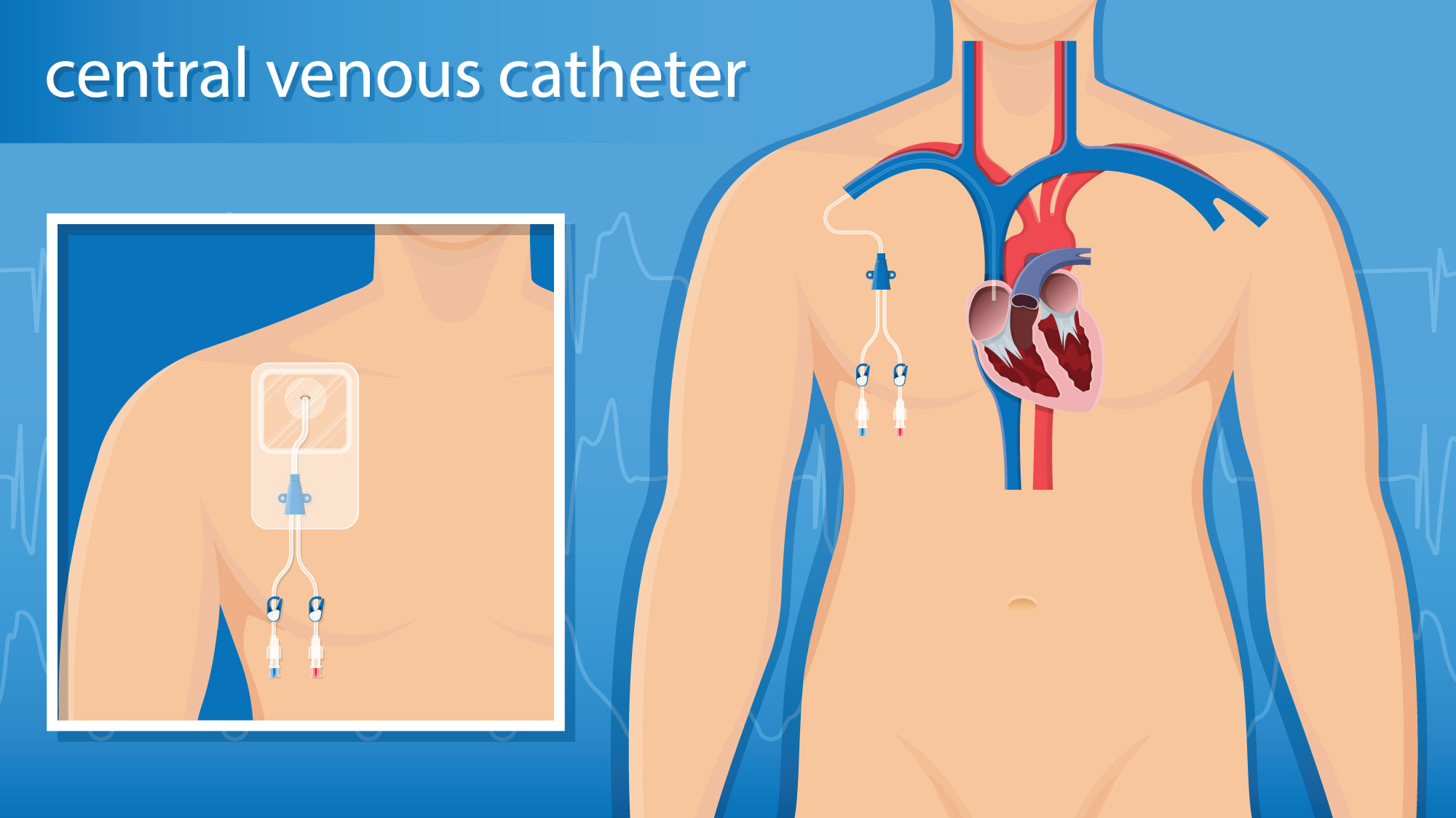Hickman Line
A Hickman is a type of central line. A central line gives your care team direct access to your veins. A Hickman is placed on the right side of your chest wall. It is a soft, thin, long, hollow tube that is put in through a vein in your chest and goes into a larger vein just above your heart. A Hickman line is used for long-term access to your veins and can be used to give chemotherapy, intravenous (IV) medications, nutrition, and to draw blood for labs.
How is it put in and used?
A Hickman line can be placed either as an inpatient (in the hospital) or outpatient (you’ll go home the same day) procedure. The area of your body where the Hickman will be placed will be sterilized to help prevent infection. Numbing medication will be given using a small needle. The care team will use an ultrasound machine to look at your veins. A small incision (surgical cut) will be made and the Hickman line will be placed into the right side of your chest. The site is then covered by a dressing (bandage).
You will have one to three lumens (tubes) dangling from the site which will either be sutured (stitched) in or a device that looks like a sticker will be used to keep them in place. The lumens are short, thin tubes with caps at the end. The lumens are used to give medications or draw blood. When your provider uses these lumens, it is sometimes called “accessing the Hickman line.” Once your Hickman line is put in, an X-Ray will be taken to make sure it is in the right place.
Possible Side Effects
After a Hickman line is placed, you are at risk for air embolism, phlebitis, blood clot, nerve irritation, and injury or irritation to the heart muscles that can cause arrhythmias.
You may have other problems after placement, while the Hickman is in use. The most common problem with a central line is an infection, blood clot, or a clot in the catheter (occlusion). Having a catheter puts you at a higher risk of getting a blood clot in the vein where the catheter is located. An occlusion is a blockage in your line, which makes the catheter unusable.
Each day you should look at your central line to check for any changes to the dressing, the insertion site, and the lumens. Make sure your dressing is intact and not wet or dirty. Signs of an infection may be seen at the insertion site and could be redness, swelling, drainage, bruising, and bleeding. Signs of a blood clot are swelling around the area.
How do I care for my catheter?
- Before touching the Hickman line, hands should be washed and gloves put on. After touching the Hickman line, gloves should be taken off and hands washed again.
- A dressing (bandage) will be put over the Hickman line insertion site. This keeps the area clean and helps keep the Hickman line from coming out. The dressing should be changed at least once a week, or if it becomes wet or dirty. Use a plastic cover or sleeve to cover your Hickman line while bathing. Never use scissors to cut away a dressing.
- The Hickman line must be flushed on a regular basis so it doesn’t get occluded. Flushing means attaching a syringe filled with normal saline solution to a lumen and pushing the fluid into the Hickman line through the cap. With some Hickman lines, a medication called heparin is also used to prevent clotting. Usually, the Hickman line needs to be flushed every day. You or a caretaker will be taught how to flush the lumens.
- Look at your Hickman line each day for signs of infection and to see if the dressing is loose, wet, or dirty.
- Do not pull on the Hickman line. Secure the lumens against your skin so you don’t accidentally pull out your Hickman line.
- When the Hickman line is no longer needed, it may be removed by your provider.
- Your care team will show you or a family member how to change the dressing or flush the line if you’ll need to do this at home.
When to contact your care team
You’ll need to look at your catheter every day for any changes. If you notice any redness, pain, discharge, or swelling at the insertion site, call your provider right away. Call your provider if flushing the line is hard, the lumens are cut or if they break, if you have any pain when the Hickman line is used, or if the Hickman line comes out of your chest.
